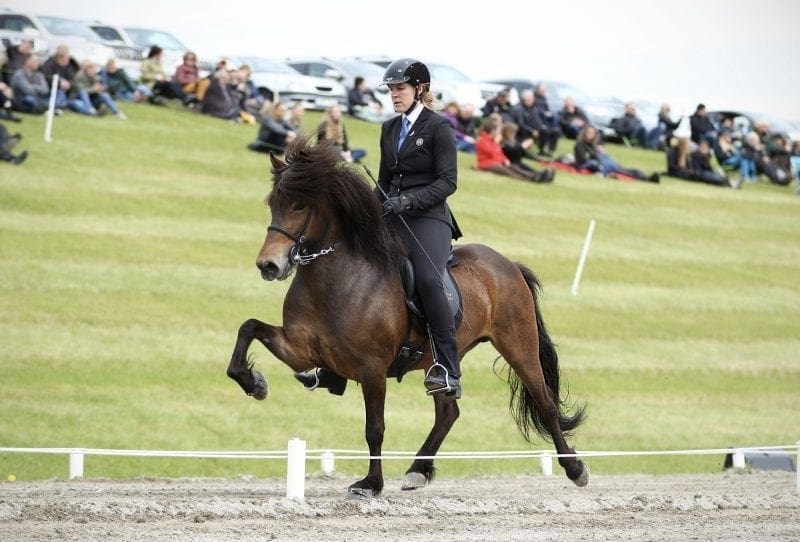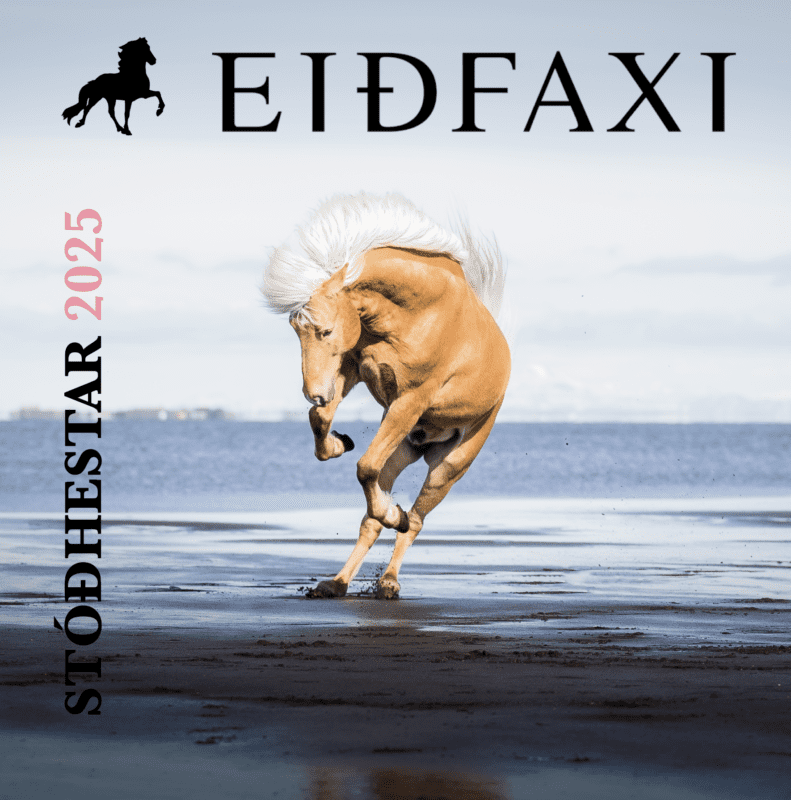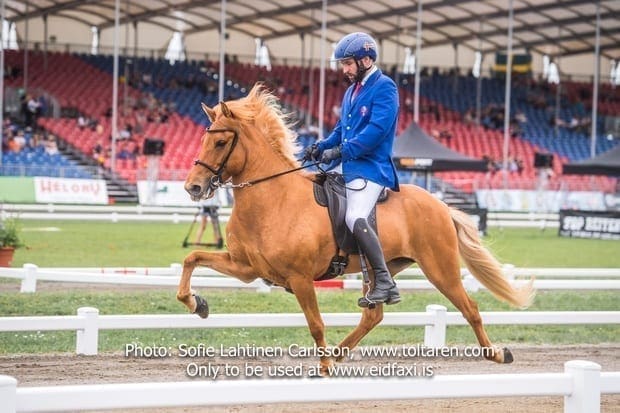“Some changes are good but still room for improvements”

Artemisia riding Hreyfing frá Akureyri 5 years old at the National Breeding Show this summer. Photo: Hrafnhildur Helga Guðmundsdóttir
Last winter changes were made to the system of breeding assessments and they were valid from the beginning of the newly finished breeding year.
Artemisia Bertus is an educated riding instructor from the University of Hólar and she is teaching and training on Nautabú in Hjaltadalur, Skagafjörður, where she also is breeding horses with her husband Höskuldur Jensson veterinarian. Eiðfaxi asked Artemisia about her opinion on these changes.
How do you think the changes have worked out this summer? Do you see anything that has still got to be improved? What was a good change?
“I find most of the changes good and work well in the system, f.ex. to ride slow tempo tölt from walk to be able to get 9,0 or more. I also find the fact that judges put a check mark on softness to be able to get a very high mark for tölt. The emphasis has been put on softness and good physical movements when judging walk, and less on the overstep of back-front legs. More emphasis on the right physical movements in general are a very important step and I think maybe we should also focus more on harmony between front and behind legs, particularly in trot.”
“I am also very pleased to see all the adjectives that have been added to the judges scale and they give a larger possibility of describing the horse they see before them and they are helpful for all of those looking at assessments in WorldFengur. These descriptions give you a lot of extra information with all the scores of course. I did notice that not all of the judges groups were focused on using the remarks, especially when it came to the mediocre horses. That we can improve, and using the adjectives available I think we can describe almost any horse quite accurately. We could even take this a bit further and add descriptions like easy tölt on a loose rein, very elastic in slow tempo trot or excellent balance in speed changes. Then it would be best to be able to look it up in WorldFengur´s search machine.”
“A great step forward is that the mark for canter now counts in the calculation. I would have liked to see the same happen with the slow tempo tölt and even that we would get a separate mark for slow tempo trot as well. I don´t like the threshold that says that it can´t be a bigger difference than 0,5 in the mark for slow tölt and tölt to get a score of 9,0 or more for tölt. I think that really does not give totally correct information on the horse, because for me these two are a different matter to me and I think that slow tölt should be defined as a separate ability, even if it is the same gait. There are namely many horses that could not get the highest possible score for tölt in this system. So the danger is that the judges give some horses a bit to much for the slow tölt or they get to low for the fast tempo tölt.”
To loose the reins to get 9.0 or more for tölt
“To me it´s really positive to be able to loosen the reins in tölt (and other gaits) at some point and I use that exercise a lot, but I don’t think we need to do it on the breeding track so the judges are able to see if the horse is in balance and self carrying. I’m not convinced that this is a good thing for all horses or the best method to see the balance and carriage of the horse. Judges should see it in another way, like how the horse is doing between given aids.”
“From the trainers perspective it can be a little complicated to rehearse and can prevent stability and calmness in the rein connection. It can also be illogical or a bad timing in the training process for a young horse that f. ex. carries itself very high naturally, and is a little sensitive on the reins and has newly learned to stretch and relax on the reins. Then if the rider has to use undesirable riding like quickly pull the reins in order to hold the horse up and even punish it for searching for a rein connection, it can be very confusing for the horse and not at all positive. Never the less this young horse can have excellent tölt and be ready to go through breeding assessment and may even develop into a great T2 competition horse a few years later. I find it suit some types of horse well to seek trot from tölt, to improve the tölt or to strengthen the trot. But it can be hard to train this at the same time as the loose rein, and then the rider has to make a choice and that is quite limiting. My opinion is that is should be the riders choice how he implements and performs the show. Of course it is great if the horses can do this well and easy but the judges should always be able to give a high mark for tölt, even though the rider chooses not to loosen the rein. So, not have this as an obligation, just encourage the riders to make an effort to show the horse’s best qualities like they do now, f.ex. by riding with one hand on the rein, make great gait changes, lengthen the topline after a job well done or loosen the rein in tölt etc. For me it goes without saying that we can demand more of the older horses and even have mandatory tasks for them.”
Cooperation
“I find it great to call it now cooperation and definitely a step in the right direction. The system today gives very limited information on the character of the horse as it appears in the scale. I would like to see emphasised on a thorough reference. The score should have a small weight because it only describes how the horse was in the track that time. I realise it is difficult to find a system that can give better information but we have to keep trying and develop our system. We are on the right track.




